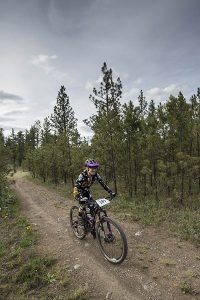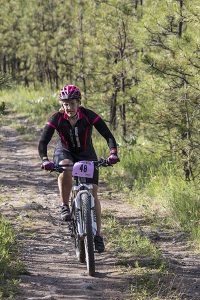“It’s really just kitchen science,” laughs Tim Cunninghamm as he describes the 30-year process of developing an electrolyte drink. He makes it sound like he was tweaking my grandmother’s cookie recipe. (You could spend 30 years doing that and they’d still come out like charred nuggets of Crisco, God bless her.) Cunninghamm and Karen Nielsen have been in the business of supplement development since 1979. The love child of their passion for minerals is an electrolyte solution called Lyte Balance. In a market where there are dozens of electrolyte drinks in all flavors of grape or shades of blue, it might seem as if the market is saturated.
Yet try finding just an electrolyte solution. Capsule versions have been on the market for a while now, but my bike-riding skills don’t allow me to swallow pills mid-tour without kissing a tree. Just about everything out there is loaded with sugars, long words like maltodextrin, food coloring, or even fake sugars (which we should by now know are not good for our health).
Why might we even need electrolytes? Aren’t we eating and drinking them regularly anyway? These invisible little minerals are responsible for a few key functions of our body, like cellular respiration and nerve signaling. When we sweat, we lose electrolytes and have a higher demand for them. Electrolytes also help us stay hydrated by attracting water molecules. This is why too much salt can make us retain water. The most common things we experience when we’re low on electrolytes are muscle fatigue and cramping. Those rather blatant symptoms indicate acute mineral imbalance. Chronic mineral imbalance is implicated in a host of health issues ranging from weak nails to restless leg syndrome to depression.

The Test
Sometimes I like to be a mad scientist too. In this capacity, I typically do something really stupid and then observe how effective or ineffective it was or how much of a dent it put in my band-aid collection. Usually I mix my own electrolyte solution for long bike rides. I throw some mineral salt in some water with a bit of coconut water, maybe lemon juice, and call it good. I also eat real food when I train. Training rides typically take me past a park bench where I can pull out some beef jerky and talk cog teeth with friends. Racing is a bit different though. In a race, I go harder, fuel mostly on fruit leather because I can eat it while riding, and suffer the consequences when I lose my electrolyte balance. Sometimes that’s a cramp, but most often it begins with nausea. Nausea makes me not want to eat. Not eating makes it worse. And pretty soon a full-on bonk is happening.
Recently someone recommended Lyte Balance, reportedly a great electrolytes-without-the-fluff product. I put them in my cupboard and forgot about them until about three hours before the 24 Hours Round the Clock mountain bike race. Everyone who ever does anything outdoorsy will tell you: Don’t try anything new when it matters. So testing the electrolytes for the first time in a race I’d been training five months for seemed like a perfect bad idea.
I instructed my team captain/medic/boyfriend as I was clipping my helmet. “Two capfuls in every refill, stuff two fruit leathers in my pocket as I fly by and hand me a bottle!” Clearly my optimism early on was high. I had memories of the previous year and watching Chelsey Magness do lap after lap without a break. When the gun went off and I started pedaling, I had ideas of when I would need to break, when hard phases would come, or when that familiar sense of body failure would creep over me. I was 90 miles in before that happened. When it did, it was because my Ruby’s Lube, Vaseline, and Orajel concoction was getting thin and a change of bike shorts was in order. My legs, and more importantly, my head, were working fine.

The night came and went. I stopped to eat some quiche and to drink my favorite race drink: bone broth (also very mineral rich). I had a cup of real coffee. I kept pedaling. Usually in a race like that, I have to worry about going too hard, climbing hills too fast. Those are the things that make me seize up. But this year my body recovered well from every climb and every surge of ego.
The day after the race, I threw some Lyte Balance in my coffee just to help with recovery. I sat on the porch with my brother, comparing our race medals and telling war stories from training to race day. “It’s all about keeping a balance,” he said. He couldn’t have been more right. To learn more about Lyte Balance, visit www.senseablesupplements.com. //
Ammi Midstokke is a nutritional therapist in Sandpoint. She wrote about fat biking in Fernie, B.C., in January. Read more of her writing at www.twobirdsnutrition.com.












